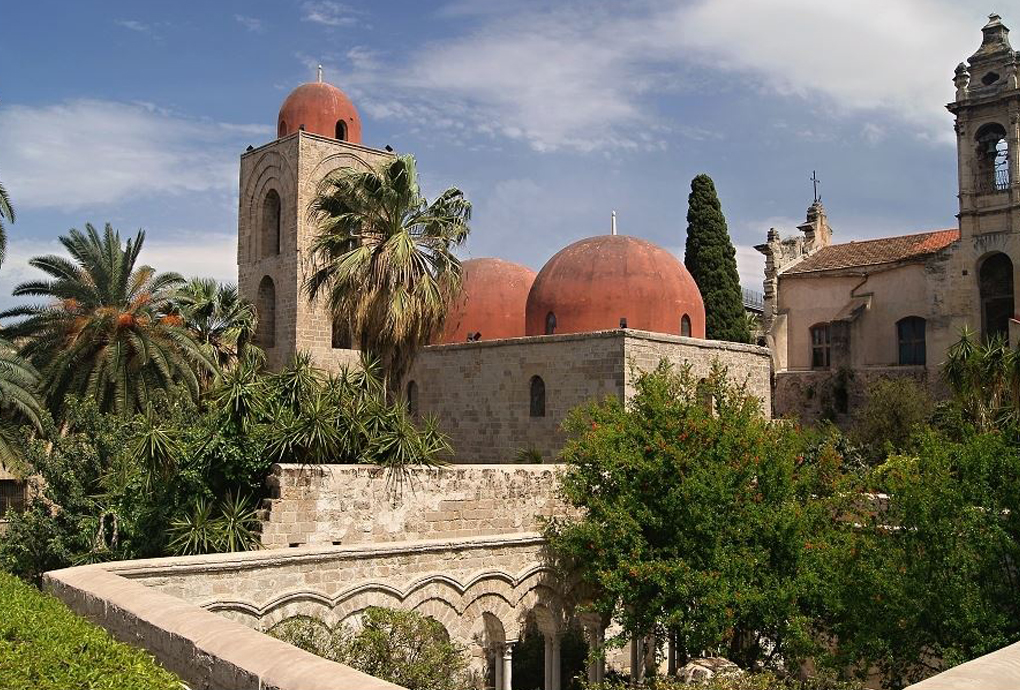End of June, Heritage specialists from all over the world will convene in Bonn in order to take part in the 39th session of the World Heritage Committee and decide the future for hopeful candidates vying for the valuable designation. Who will be the winners of this game? And who are the “medieval” candidates?
To be inscribed on the list of World Heritage by UNESCO is a coveted honour as well as a financial boon. There are people, who simply use the list as their life’s tourist itinerary, checking one site out before proceeding to the next. This year’s lucky winners will be unveiled in Bonn come end of June.
Already, however, we know that some of the hopeful candidates will be rejected. ICOMOS, which rates the applications for UNESCO, recently published their report with their evaluation of the different applications.
In the following, the applicants, which specifically refer to their medieval heritage – cultural or natural or mixed – are presented with the conclusions of ICOMOS added. However, the report is well worth a full read as it – as usual – presents a number of reflections upon the proper way of going about an application; for instance a number of applications are derided for not providing decent translations into one of the working languages of UNESCO! One should imagine this was a small expense to meet, considering the expense many applicants meet, while trying to obtain the right to sport the coveted signs in their streets.
Austria: Hall in Tirol and the Mint
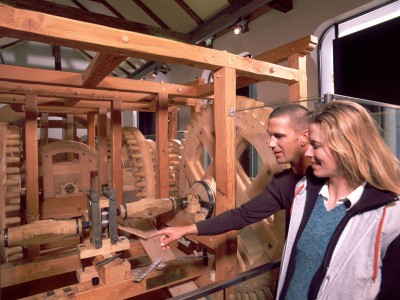 Hall in Tirol is located some ten km east of Innsbruck. Its old town consists of a lower and upper town, which developed in medieval times as an economic centre based on extraction of rich salt deposits. The medieval Hasegg castle in the Lower town hosted the Hall mint, which was established in the 15th century. In the 16th century the earliest industrial mint with a mechanized silver-stamping machine was constructed. However, in its review, ICOMOS has noted that the links between this historical and technological innovation exhibited in the form of a replica machine in the Hasegg Castle and the surrounding city are at their best,tenuous. The application should thus be rejected, advises ICOMOS.
Hall in Tirol is located some ten km east of Innsbruck. Its old town consists of a lower and upper town, which developed in medieval times as an economic centre based on extraction of rich salt deposits. The medieval Hasegg castle in the Lower town hosted the Hall mint, which was established in the 15th century. In the 16th century the earliest industrial mint with a mechanized silver-stamping machine was constructed. However, in its review, ICOMOS has noted that the links between this historical and technological innovation exhibited in the form of a replica machine in the Hasegg Castle and the surrounding city are at their best,tenuous. The application should thus be rejected, advises ICOMOS.
France: The Burgundy Climats
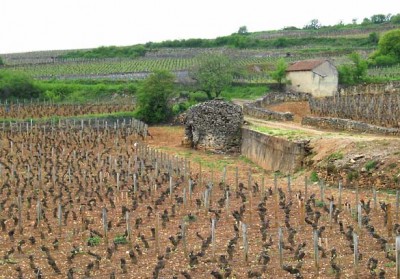 The Climats are a set of 1247 precisely defined viticultural parcels located on the slopes of the Côte de Nuits and the Côte de Beaune plus the city of Beaune and the nearby villages extending south of Dijon up to the Maranges. The second part consists of the historic centre of Dijon, where the political regulation of the ‘terroirs’ was set up. Famed for its wine-production since antiquity and its later medieval development under the auspices of first the Cistercians and later the Burgundian dukes. The proposal is generally favoured by ICOMOS, however UNESCO is recommended to refer the application back to the “State Party” because parts of the historical landscape has not been included (the area South of Beaune, which is heavily industrialized and perhaps excluded for political reasons?. Another reason is that some quarries have concessions, which should not be renewed. Concerns are also raised by the ubiquitous wind-farms, of which several have been planned.
The Climats are a set of 1247 precisely defined viticultural parcels located on the slopes of the Côte de Nuits and the Côte de Beaune plus the city of Beaune and the nearby villages extending south of Dijon up to the Maranges. The second part consists of the historic centre of Dijon, where the political regulation of the ‘terroirs’ was set up. Famed for its wine-production since antiquity and its later medieval development under the auspices of first the Cistercians and later the Burgundian dukes. The proposal is generally favoured by ICOMOS, however UNESCO is recommended to refer the application back to the “State Party” because parts of the historical landscape has not been included (the area South of Beaune, which is heavily industrialized and perhaps excluded for political reasons?. Another reason is that some quarries have concessions, which should not be renewed. Concerns are also raised by the ubiquitous wind-farms, of which several have been planned.
Germany: Naumburg Cathedral and the Landscape of the Rivers Saale and Unstrut.
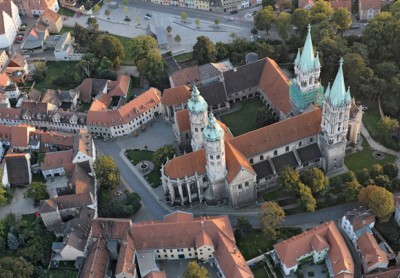 This site, which is located in the eastern part of the Thuringian Basin revolves around the confluence of the rivers. The area today exhibits a tranquil contemporary country character, partially touched by Modernity. Evidence of the medieval past is of course present in the Cathedral of Naumburg, but also in the surrounding countryside in the form of religious and defensive structures, ancient routes, buried traces of agrarian land organization and land use forms (toponyms). ICOMOS, however, does not recommend that the application is approved. Arguments circle around the fragmented character of the landscape, which historically has been split up by heavy industrialisation, plus the fact that further industrial development does not appear to be curbed. ICOMOS also notes that even if Naumburg Cathedral is spectacular, it does not appear to be unique. The presentation of the project, though, has led to the development of a specific standard for documenting and describing a landscape and its distinct features, which ICOMOS hopes can be used as a guideline for other similar applications in the future.
This site, which is located in the eastern part of the Thuringian Basin revolves around the confluence of the rivers. The area today exhibits a tranquil contemporary country character, partially touched by Modernity. Evidence of the medieval past is of course present in the Cathedral of Naumburg, but also in the surrounding countryside in the form of religious and defensive structures, ancient routes, buried traces of agrarian land organization and land use forms (toponyms). ICOMOS, however, does not recommend that the application is approved. Arguments circle around the fragmented character of the landscape, which historically has been split up by heavy industrialisation, plus the fact that further industrial development does not appear to be curbed. ICOMOS also notes that even if Naumburg Cathedral is spectacular, it does not appear to be unique. The presentation of the project, though, has led to the development of a specific standard for documenting and describing a landscape and its distinct features, which ICOMOS hopes can be used as a guideline for other similar applications in the future.
Iceland, Denmark, Germany, Latvia and Norway: Viking Age Sites in Northern Europe
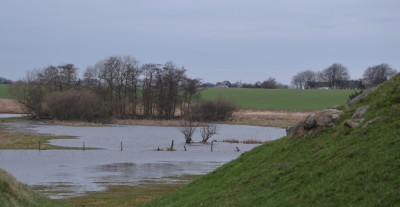 This application aims to have a series of seven sites inscribed on the list: Hedeby, Grobiņa, further parts of Thingvellir, the whole assembly of Jelling, the quern production site at Hyllestadt, the defensive systems of trelleborg and Danevirke and the burial sites of Grobiņa and Vestfold. The argument is that these sites collectively witness to the Viking trade, settlement and raiding, which was instrumental in the development of Northern Europe. ICOMOS, however, have obviously not been convinced that exactly these sites (or the conglomerate of them) could be seen as exemplars of Viking activities. Why are no Swedish or English – or for that matter Canadian and Russian sites included in the application? It is obvious that both the applicants and the reviewers have struggled to find a way to further the application in order to have a wider group of Viking-monuments designated as World Heritage. But it is also obvious that the project has not been entirely successful. So back to sender with some detailed suggestions.
This application aims to have a series of seven sites inscribed on the list: Hedeby, Grobiņa, further parts of Thingvellir, the whole assembly of Jelling, the quern production site at Hyllestadt, the defensive systems of trelleborg and Danevirke and the burial sites of Grobiņa and Vestfold. The argument is that these sites collectively witness to the Viking trade, settlement and raiding, which was instrumental in the development of Northern Europe. ICOMOS, however, have obviously not been convinced that exactly these sites (or the conglomerate of them) could be seen as exemplars of Viking activities. Why are no Swedish or English – or for that matter Canadian and Russian sites included in the application? It is obvious that both the applicants and the reviewers have struggled to find a way to further the application in order to have a wider group of Viking-monuments designated as World Heritage. But it is also obvious that the project has not been entirely successful. So back to sender with some detailed suggestions.
Italy: Arab-Norman Palermo and the Cathedral Churches of Cefalú and Monreale
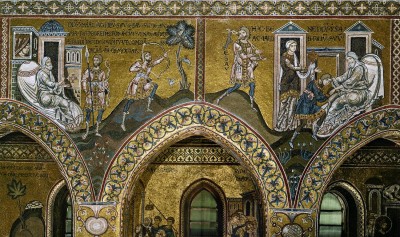 Arab-Norman Palermo and the Cathedral Churches of Cefalú and Monrale constitute a series of nine religious and civic structures dating from the era of the Norman kingdom of Sicily (1130 – 1194). With two palaces, three churches, three cathedrals and a bridge, the building structures collectively “illustrate a socio-cultural syncretism between Western, Islamic, and Byzantine cultures that gave rise to an architectural and artistic expression based on novel concepts of space, structure, and decoration”, it says. It stands to reason that the application is approved by ICOMOS. And in fact it came as a surprise to the present reviewer of the ICOMOS-report that the site was in fact not inscribed on the list long time ago!
Arab-Norman Palermo and the Cathedral Churches of Cefalú and Monrale constitute a series of nine religious and civic structures dating from the era of the Norman kingdom of Sicily (1130 – 1194). With two palaces, three churches, three cathedrals and a bridge, the building structures collectively “illustrate a socio-cultural syncretism between Western, Islamic, and Byzantine cultures that gave rise to an architectural and artistic expression based on novel concepts of space, structure, and decoration”, it says. It stands to reason that the application is approved by ICOMOS. And in fact it came as a surprise to the present reviewer of the ICOMOS-report that the site was in fact not inscribed on the list long time ago!
Conclusion
To conclude: Only one of the five “medieval” applications is being furthered by ICOMOS. However, other – non-medieval – proposals have been awarded a favorable review and the competition is rather tough. Nevertheless, it seems unavoidable to award the Norman parts of Palermo the coveted designation. Anyone, who has visited the sights will recognize how precious and unique, they are.
Another conclusion is that both the applicants and ICOMOS struggles to navigate inside the perimeters of a new concept of heritage, where monuments are still important, but context in the form of landscape is granted seemingly equal status. Thus the Hall-project runs aground because the core of the project is a machine, which is no longer in existence and because the late-medieval city of Hall does not deliver a consistent and unique story-line, which underwrites the remarkable story of the mint (it is just another semi-medieval town with a nice atmosphere). The Naumburg project flounders because the applicants know that in itself the Cathedral (which is of course unique) did not succeed to get the coveted status of World Heritage in time; basically because it was located in the former DDR. And now the time has passed when each and every European Cathedral could be sure of entering the list. Which made the local initiators jazz up the application with an inventory of the surrounding landscape. Being Germans, they of course did this in an exemplary way, which earned full marks by ICOMOS. But not the required ‘imprimatur’. As to the Burgundian Climats application, it is obvious the applicants have been more “sly”. First of all, the landscape is really unique. And secondly, they have downplayed the pearl in the core: the medieval charm of the wine-capital, Beaune. Thus, In the ICOMOS report there are no photos of the Hospice in Beaune, which is really worth more than a detour. Finally the reviewers from ICOMOS have struggled to make ends meet with the Viking-application. On one hand it is recognized that the Viking-endeavour really was unique in its geographical and cultural outreach from (at least) Constantinople to Newfoundland. It is also accepted that certain monuments are central to understanding this Early Medieval “robbing-trading-colonizing” empire. However, the monuments listed in the application do obviously not constitute a comprehensive list of what might entice people to embark on a Viking trail. More monuments have to be included in the list and thus more nations have to become stakeholders. However, this is a complicated process as these nations – for instance Sweden – often have other fish to fry.
SOURCE:
